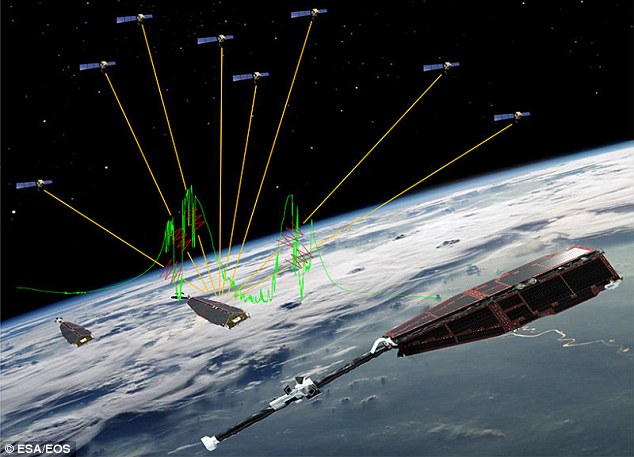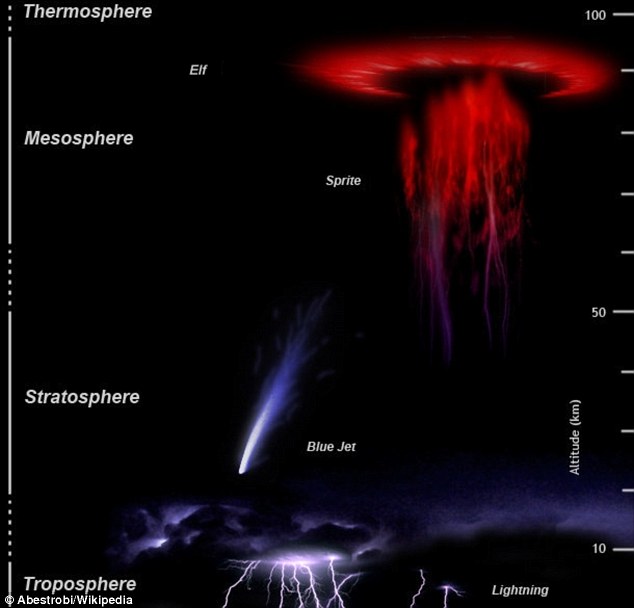These SWARM satellites were sent into orbit to measure the Earth’s invisible magnetic field.
But the scientific instruments have been suffering mysterious blackouts as they circle the planet leaving specialists puzzled.

Now, scientists have probably discovered why the three satellites launched by the European Space Agency have regularly lost their navigation signal when passing over the equator above the Atlantic Ocean: Thunderstorms high in the ionosphere.
What are ionospheric thunderstorms?
Occurring around 186 miles to 372 miles up in the atmosphere, thunderstorms in the ionosphere are actually quite different from the lightning we see here on Earth.
Sunlight is so powerful at this altitude that it can strip the electrons from atoms, creating electrically charged particles called ions and free electrons.

Ionospheric thunderstorms occur as turbulence in these clouds of electrons which create small ‘bubbles’ inside which there is little electrically charged material.
These bubbles bend and scatter electromagnetic waves sent by GPS satellites 12,000 miles away, meaning the Swarm satellites are unable to pick up the signal.
Specialists say the storms can cause the signal to the Swarm satellites to vanish for several minutes at a time.
These ionospheric thunderstorms are well known, but it’s only now we have been able to show a direct link between them and the loss of the GPS.











